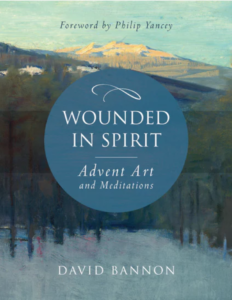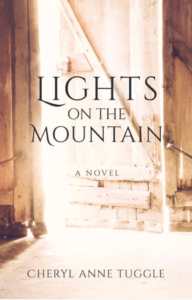
When I find myself with a free day in a major city, I often look for an art museum. I wander the galleries, lingering mainly among the Impressionists and European Masters. Many museums offer listening devices that give background details on the important paintings, but I have little patience with the headsets or with the clumps of visitors that block the view of the paintings themselves. So, I move from painting to painting, reading the one-paragraph placard by each one, and leave the museum feeling nourished in some subliminal way—yet hardly enlightened.
I suspect that I am not alone in my naive approach to the visual arts. One of G. K. Chesterton’s witticisms sums up an all-too-common bias: “In the MiddleAges we have art for God’s sake, in the Renaissance we have art for man’s sake, in the nineteenth century we have art for art’s sake, and in the twentieth century we have no art for God’s sake.” A trained artist himself, Chesterton was stereotyping for effect, but in truth Christians have shown an ambivalence toward art of all kinds.
Unrivaled as a patron, and responsible for many of the finest creations, the church has at times undergone spasms of counter-reaction: whitewashing images during the iconoclasm controversy, banning and burning books, and destroying church organs. Though we moderns tend to demonstrate more tolerance, artists themselves often feel unappreciated and even estranged from the church.
Daily, art nourishes my own faith. As I write, classical music plays in the background, and I feast on books in my library. And as I’ve mentioned, I feel a strange gravitational tug toward art museums. What draws me? Beauty, of course—yet I sense something more. The journalist Malcolm Muggeridge put it this way: “Only mystics, clowns and artists, in my experience, speak the truth, which, as Blake was always insisting, is perceptible to the imagination rather than the mind.” Artists communicate with a different, and often more penetrating, style than preachers and theologians.
The Bible itself demonstrates this principle, for God’s acts get the bulk of attention, given far more weight than the dogma that later emerged. The apostle Paul’s left-brain exegetical passages are the exception, not the rule, easily overwhelmed by passages devoted to narrative, poetry, wisdom literature, parables, prophetic visions, and, yes, the Pentateuch’s meticulous descriptions of the visual arts.
If I hope to enrich my faith through the visual arts, I need a guide. When I enter museum galleries devoted to religious art, the paintings testify to a different era, with different principles of aesthetics at work. In this book, David Bannon’s explorations show by example what makes art worth our effort and what it can do for the person of faith.
First, art offers an unexpected vantage point. For example, one does not expect a book of Advent meditations to bear the title Wounded in Spirit. As the season approaches, upbeat Christmas carols blare from speakers in the shopping malls, and the store clerks may offer a “Merry Christmas!” greeting. From where comes this melancholy counterpoint about wounded spirits?
From the Gospel of Luke, to be precise. The old man Simeon, assured he would live to see the Messiah, and having grown gray and frail waiting for the consolation of Israel, seasons his congratulations to Mary with these words: “And a sword will pierce your own soul too.” Somehow, in the midst of joyous celebration, he foresees the shadow looming over the Incarnation: the slaughter of the innocents, the flight to Egypt, the tragic ending on an executioner’s cross. Decades later, Paul would interpret these events for the Philippians through a theological lens: a member of the Godhead stripping away the prerogatives of divinity to become a human being, and not only that but one who came in the form of a slave, even one subject to death, yes, even that most ignoble death on a cross. Christmas Day was only the first of many humiliations that Jesus would undergo.
Depression and suicides spike at Christmas, as loneliness and the memories of lost loved ones invade the background cheer. My own father died in mid-December, before his twenty-fourth birthday, an untimely death that forever cast a pall over our family’s Christmases. We know, all of us, the dissonance of which Simeon spoke to Mary: of love splattered with blood, of consolation that proves diffused and fleeting. Art brings that dissonance to the foreground, with a poignancy that wounds the spirit like a sword.
Second, art renders something unique to the artist’s own experience of that dissonance. I know the author of this book: his own griefs, mistakes for which he has paid dearly, his inconsolable loss. It surprises me not at all that David Bannon would write an Advent book with such a title. I did not, however, know before reading these pages the personal trials of Tissot or Murillo or many of the artists discussed here.
Wounded in Spirit has become my guide, revealing what no one-paragraph summary in a museum could possibly make plain: the creator’s internality that gets projected on a canvas for the rest of us to contemplate. For the artist, bringing hidden wounds into the light may become a move toward healing—although, paradoxically, complete healing might also dry up the font of creativity.
A depressed Rainer Maria Rilke once wrote, “Art is superfluous. . . . Can art heal wounds, can it take the bitterness away from death? It does not quiet despair, it does not feed the hungry, it does not clothe the freezing.” Yes, art has its limits, but I would answer his rhetorical questions more positively. Art does at least contribute to the healing of wounds, by awakening a sense of companionship in those who receive it: I am not alone. More, art may present the needs of others in such a way as to arouse the very compassionate response that Rilke doubts: think of van Gogh’s portrayals of peasants and coal miners, or the AIDS quilt that toured the nation, or photographs of refugees fleeing famine and war.
Great art operates on us at a deeper level than the rational. It conveys truth rather than arguing for it, and presents reality implicitly rather than explicitly. After seeing Hans Holbein’s realistic painting of Christ’s tortured body, Dostoevsky was haunted by it, and included the scene in his novel The Idiot. Thomas Merton, a self-indulgent dandy, became captivated by Byzantine mosaics on a visit to Rome; from them, he later said, he first learned the mystery of a God of infinite power, wisdom and love who had yet become man. Reciting the poem “Love” by George Herbert led to Simone Weil’s conversion: having committed it to memory, she repeated it almost as a mantra during violent headaches until somehow, without her willing it, the poem became a prayer. “It was during one of these recitations,” she writes, “that Christ himself came down and took possession of me.”
Finally, art forms a bridge between the artist’s soul and our own. Every artist, regardless of the medium, wants someone to see or hear or read or otherwise receive the result that emerges from creative labor. The literary critic Cleanth Brooks observes, “In making us see our world for what it is, the artist also makes us see ourselves for what we are.” In the process, art invites a form of meditation.
David Bannon widens the bridge of connection for me. His references to literature—Tolstoy, Byron, Shelley, Longfellow, Tennyson, Emerson, Shakespeare— enrich what I learn from the visual art he discusses. And in these pages I also meet familiar mentors of thought and theology: Buechner, Merton, Tillich, Heschel, Kierkegaard, Baillie, Rilke, Nouwen, Lewis, and of course the authors of the Bible.
Among all these mentors, some familiar and many new to me, I encounter art in a more restful, meditative way than if I were standing amid a buzzing museum crowd with a headset clutched to my ear. Within these pages I find much to contemplate, applying something of what took place in the artist to my own life. I am no longer staring at strange art in a museum in a new city. Now, the images come to me, held in my hands, along with the resources I need to understand and interpret them.
According to James Baldwin, “Every artist is involved with one single effort, really, which is somehow to dig down to where reality is.” For the artist of faith, such as the representatives in this collection, reality includes the realm of eternity. Our modern, materialistic culture considers eternal matters as peripheral, not nearly so urgent as, say, making money and achieving success. The noise of surrounding culture tends to drown out a God who prefers to whisper, and we need prophetic prods in order to reorder our world.
Art freezes the moment, quickening the senses. “I am attempting to express what I saw in a flower which apparently others failed to see,” explained Georgia O’Keefe. In doing so, art nurtures that most human act, our ability to transcend the immediacy of time and space. The ordinary can become extraordinary, the instantaneous can become permanent—a form of lectio divina that requires no words.
Even as I write these words, my CD changer has made mechanical noises announcing a new disc under the laser. Instantly the room fills with the throaty sounds of a Russian male choir chanting prayers in a language I cannot understand. I stop typing, shove aside the papers on my desk, and close my eyes. Memories of a trip to St. Petersburg, Russia, come flooding back, including a visit to an oniondomed cathedral when I heard such sounds in person as they reverberated off the magnificent icon-covered dome above.
The following day I visited the Hermitage Museum. I walked into a room containing one of the world’s largest collections of Rembrandt paintings. His massive rendition of The Return of the Prodigal Son was the first to catch my eye, a painting so evocative that Henri Nouwen spent two days sitting before it in a folding chair, meditating—and later wrote a book with that title about his encounter. The German siege of Leningrad imperiled all these paintings, which were saved only by a heroic rescue effort. Rembrandt’s biblically themed portrayals survived not only that war, but also the atheistic frenzy of Bolsheviks who demolished churches and murdered forty two thousand priests.
Art endures. Later, a Christian convert from the darkest days of Stalin’s reign wrote, “The task of a writer is to select more universal and eternal questions, the secrets of the human heart and conscience, the confrontation of life with death, the triumph over spiritual sorrow, the laws of the history of mankind that were born in the depths of time immemorial and that will cease to exist only when the sun ceases to shine.” Aleksandr Solzhenitsyn devoted his life to honoring, by making permanent, the sacrifices of those who clung to such beliefs in a world gone mad.
Great religious art strives wordlessly for something similar. The paintings reproduced and discussed in these pages have become devotional for me in the best sense of the word: they inspire and inform my sense of devotion to the One who is eternally worthy.
—PHILIP YANCEY
 It’s a thing people ask when you’ve authored a novel: how and why it came to be written. Answering the question, though, is a bit like trying to relate the dream you had last night. You know how it went, but just try and tell it that way.
It’s a thing people ask when you’ve authored a novel: how and why it came to be written. Answering the question, though, is a bit like trying to relate the dream you had last night. You know how it went, but just try and tell it that way.